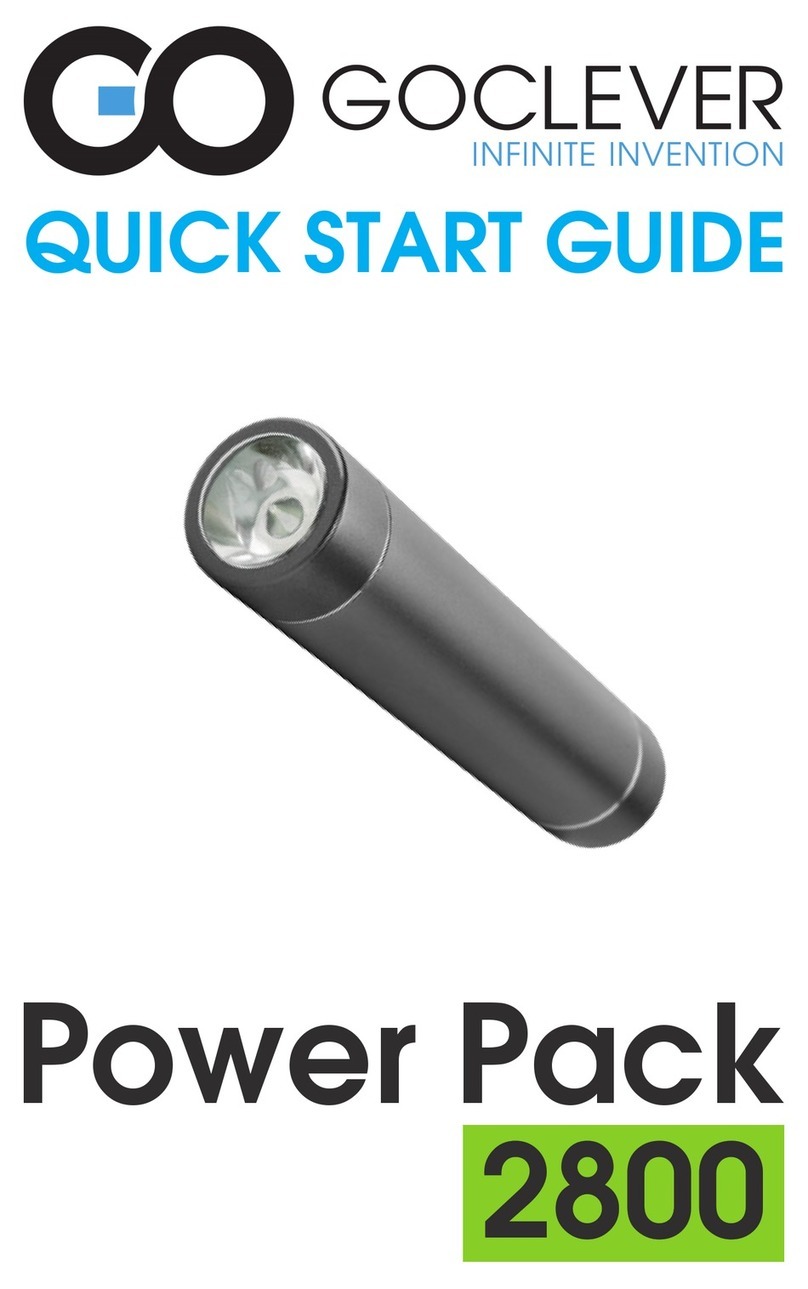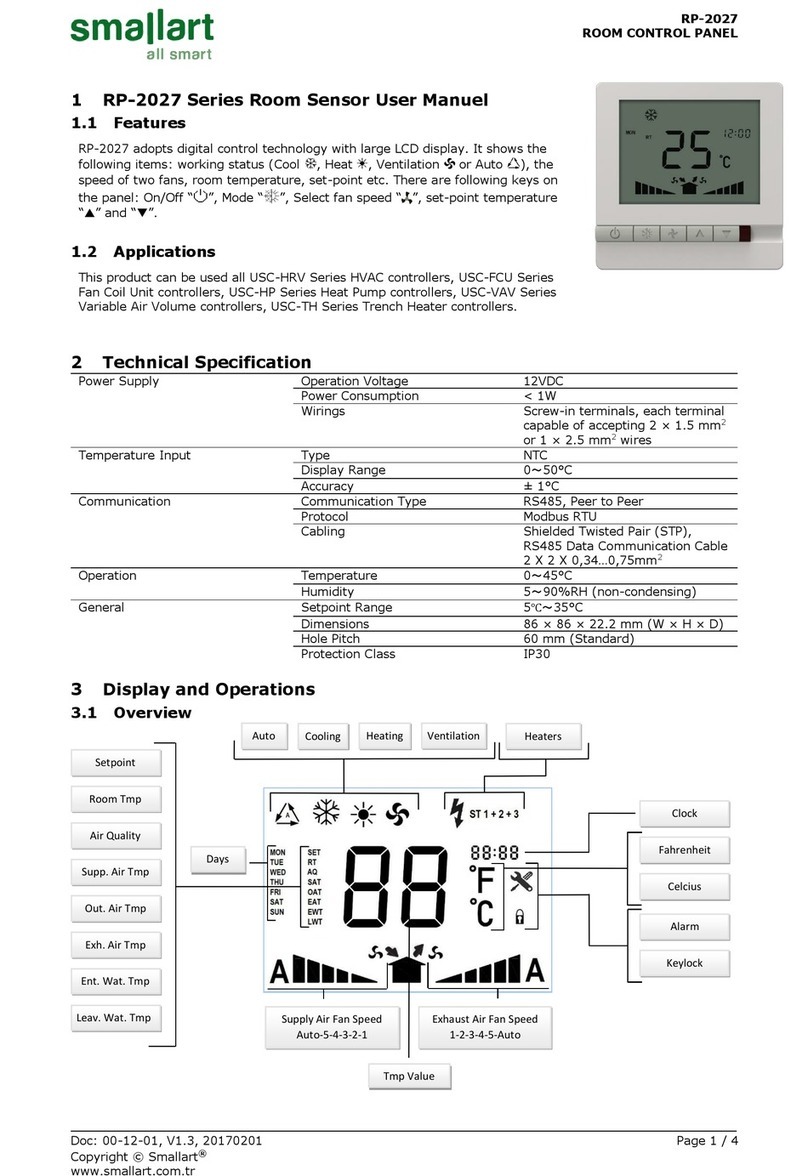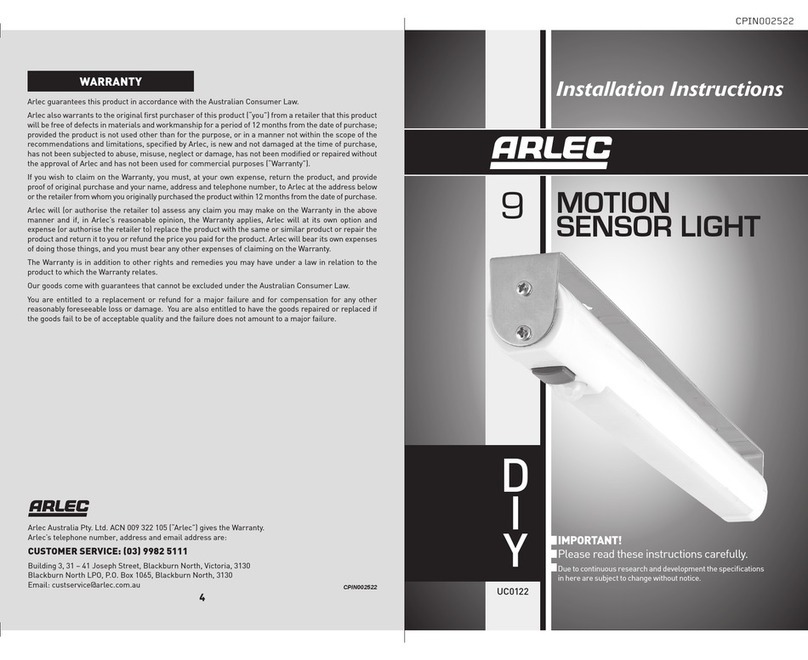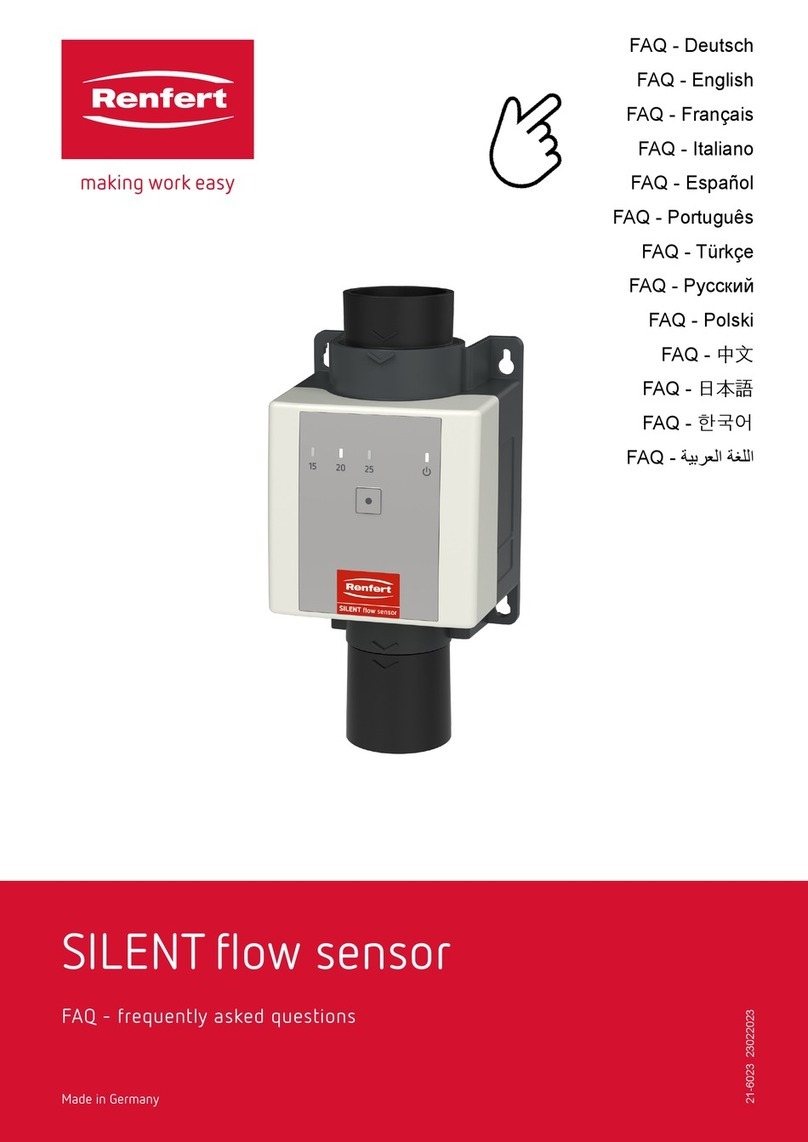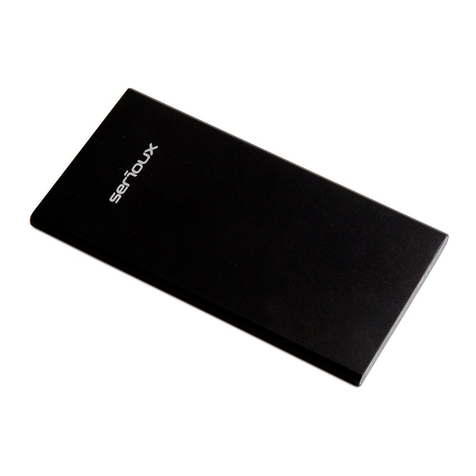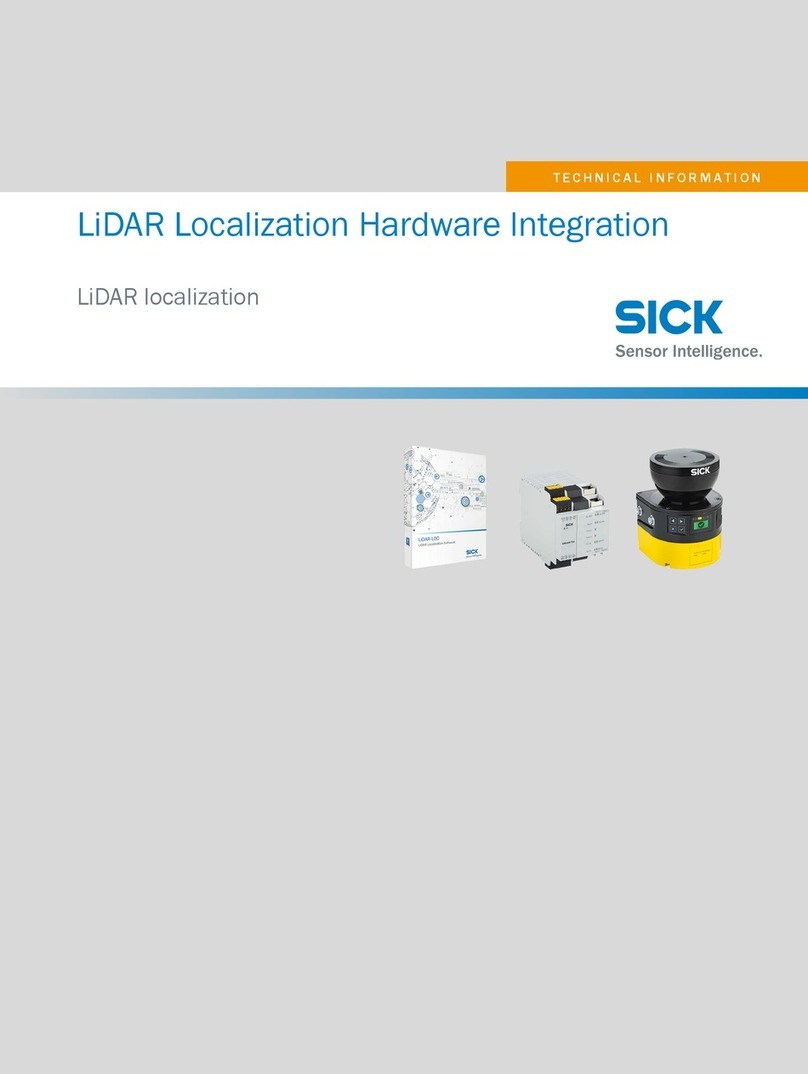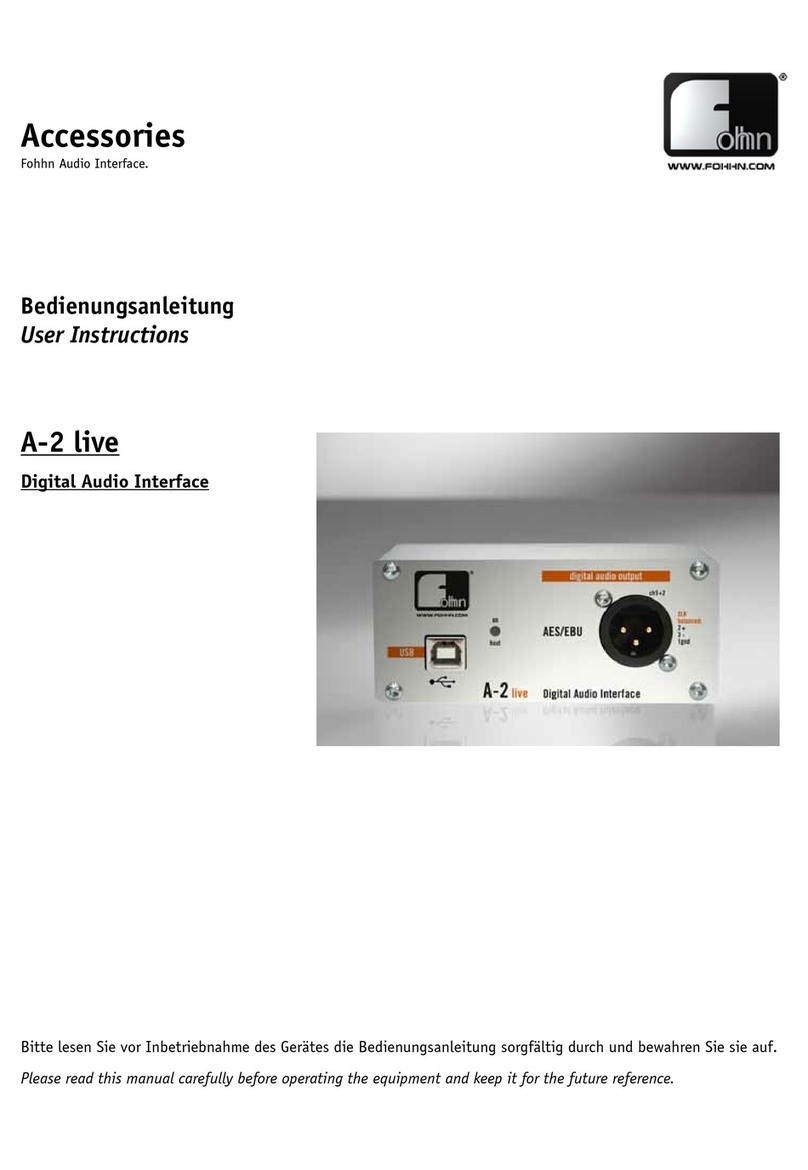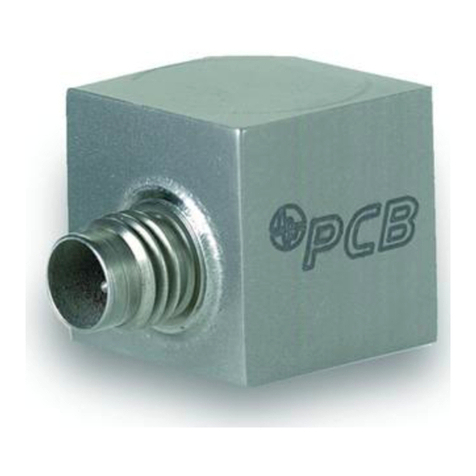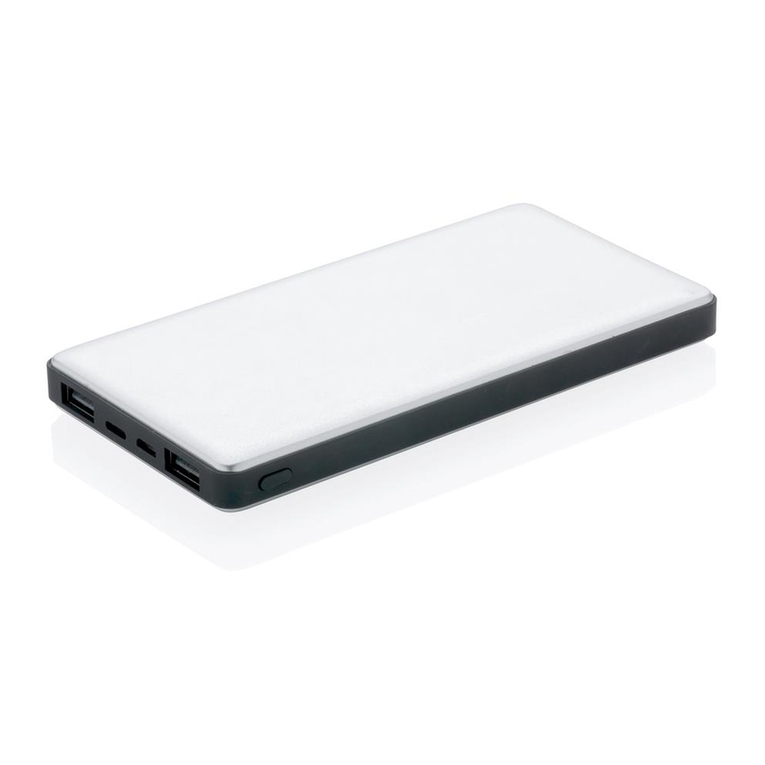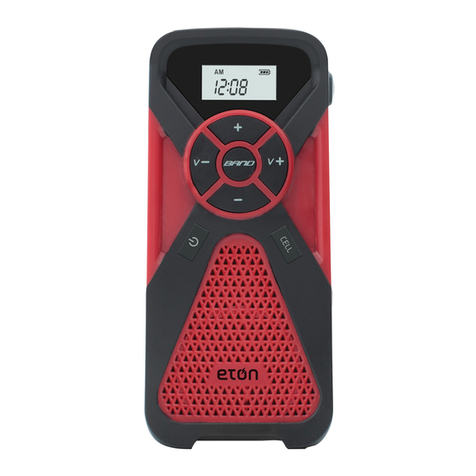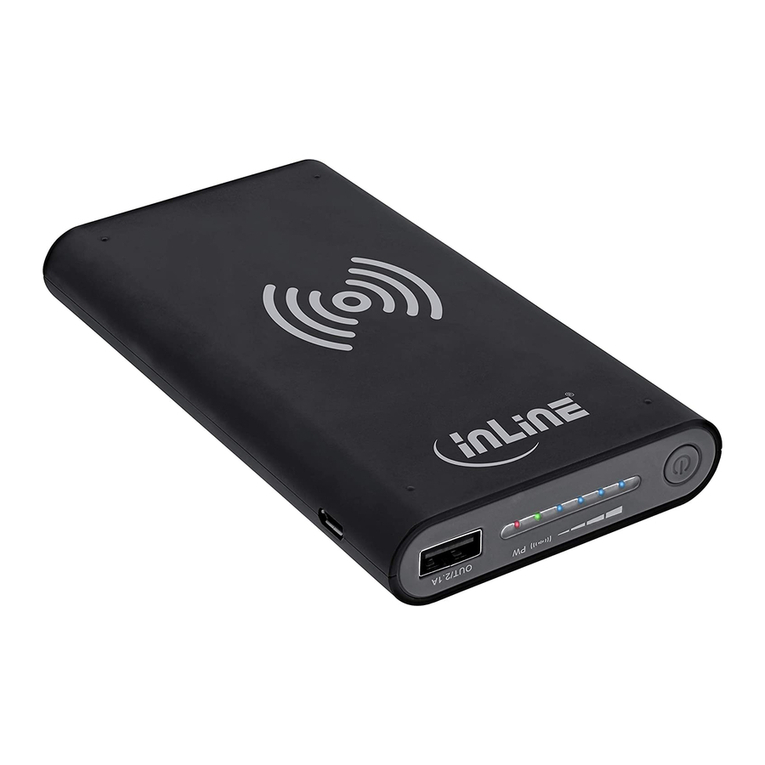Goclever GC3DPI User manual

Rev. 1.0 Model: GC3DPI
3D PRINTER INVENTION
PL INSTRUKCJA OBSŁUGI
EN USER MANUAL

PL
2
A.
I WPROWADZENIE
Dziękujemy za wybór naszego produktu. Wierzymy, że jego użytkowanie będzie dla
Państwa przyjemnością. Urządzenie służy do modelowania przedmiotów z tworzywa
sztucznego - pozwala ci szybko i prosto rysować przedmioty w powietrzu!
II SPECYFIKACJA TECHNICZNA
Parametry zasilania: 100V-240V ~, 50/60Hz, II klasa
III INSTRUKCJA BEZPIECZNEGO UŻYTKOWANIA
1. Należy dokładnie przeczytać instrukcję obsługi przed rozpoczęciem użytkowania. Prosimy
zachować tę instrukcję obsługi, aby móc korzystać z niej w czasie użytkowania produktu.

PL
3
2. Przed połączeniem urządzenia do zasilania, należy upewnić się, że parametry sieci
elektrycznej odpowiadają danym na tabliczce znamionowej urządzenia.
3. Urządzenie jest przeznaczone do użytku wewnątrz pomieszczeń.
4. Nie wolno pozostawiać urządzenia bez nadzoru, gdy jest podłączone do sieci elektrycznej.
5. Niniejszy sprzęt może być użytkowany przez dzieci w wieku co najmniej 8 lat oraz przez
osoby o obniżonych możliwościach fizycznych, umysłowych i osoby o braku
doświadczenia i znajomości sprzętu, jeżeli zapewniony zostanie nadzór podczas
użytkowania sprzętu. Dzieci nie powinny bawić się sprzętem. Dzieci bez nadzoru nie
powinny wykonywać czyszczenia i konserwacji sprzętu.
6. Jeśli przewód zasilający i/lub zasilacz jest uszkodzony, musi zostać wymieniony przez
producenta lub autoryzowany serwis.
7. Dysza drukująca może osiągnąć temperaturę nawet do 230°C. Nie należy dotykać
końcówki urządzenia ani tworzywa zaraz po wypłynięciu z dyszy, gdyż grozi to
poparzeniem. Należy unikać kontaktu z ciałem oraz z substancjami łatwo-palnymi.
8. W otwór przeznaczony do ładowania wkładu PLA lub ABS, nie należy aplikować żadnego
innego materiału. Takie działanie grozi uszkodzeniem urządzenia.
9. Do zasilania urządzenia należy używać tylko i wyłącznie zasilacza dedykowanego do
urządzenia.
10. W celu uniknięcia zwarcia i uszkodzenia urządzenia należy uważać, aby końcówka
zasilacza i wkład nie były mokre.
11. Nie należy używać urządzenia w wilgotnym środowisku.
12. Urządzenie należy przechowywać w suchym i bezpiecznym miejscu.
13. Nie wolno naciskać przycisków serowania drukarką ze zbyt dużą siłą. Takie działanie
może spowodować uszkodzenia mechaniczne przycisków.
14. Jeżeli przekazujemy urządzenie osobie trzeciej, musimy przekazać wraz z nim tę
instrukcję obsługi. Elektroniczna wersja instrukcji dostępna jest pod adresem:
serwis@goclever.com
IV ZAWARTOŚĆ OPAKOWANIA
Otwórz opakowanie i ostrożnie wyjmij urządzenie. Sprawdź, czy zestaw jest kompletny i bez
uszkodzeń. Upewnij się, że części z tworzyw sztucznych nie są pęknięte, a przewód nie jest
uszkodzony. Jeśli stwierdzisz, że brakuje części bądź któraś z nich jest uszkodzona, nie używaj
urządzenia, lecz skontaktuj się ze sprzedawcą. Zachowaj opakowanie lub zutylizuj zgodnie z
lokalnymi przepisami.
Uwaga! Dla bezpieczeństwa dzieci proszę nie zostawiać swobodnie dostępnych części
opakowania (torby plastikowe, kartony, styropian, itp.). Niebezpieczeństwo uduszenia!

PL
4
V OPIS PRODUKTU (rys. A)
A –ładowanie wkładu
B –cofanie wkładu
C –ustawianie temperatury (-)
D –ustawianie temperatury (+)
E –otwór dla wkładu
F –gniazdo zasilania
G –dioda LED zasilania
H –wyświetlacz LED
I –dioda LED pracy
J –regulacja prędkości podawania wkładu
K –osłona termiczna podajnika
VI OBSŁUGA URZĄDZENIA
1. Należy włożyć wtyczkę zasilacza do gniazda elektrycznego. Następnie należy podłączyć
przewód zasilacza do urządzenia, zaświeci się żółta dioda LED (G).
2. Na wyświetlaczu LCD zostanie wyświetlony napis: "ABS" lub "PLA". W zależności od tego
jaki materiał zostanie użyty, należy wybrać, za pomocą przycisku C lub D.
3. Należy zatwierdzić wybór naciskając przycisk A. Zostanie zapalona czerwona dioda (I) i
dysza (K) zacznie się rozgrzewać. Po osiągnięciu docelowej temperatury, dioda (I) zmieni
kolor na zielony.
4. Gdy urządzenie rozgrzeje się do temperatury roboczej, można wprowadzić wkład do
otworu ładowania E używając przycisku A. Jeżeli z dyszy zacznie się wyłaniać ciekły materiał,
oznacza to, że wkład został załadowany poprawnie.
5. Za pomocą przycisku J mamy możliwość dostosowania prędkości wyłaniania się wkładu
z dyszy. Należy dostosować wartość prędkości do własnych potrzeb drukowania.
6. Temperatury topnienia wkładu ABS i PLA może się znacznie różnić w zależności od koloru
wkładu. Dzieje się tak z powodu użytych do zabarwienia włókien pigmentów. Temperaturę
można dostosować przy pomocy przycisków C i D.
7. 3D PEN przechodzi w tryb uśpienia, jeżeli przez ponad 2,5 minut nie zostanie wywołane
żadne działanie. W celu przełączenia urządzenia na tryb pracy, należy nacisnąć przycisk A.
8. Jeżeli chcesz wymienić wkład (zmienić kolor), należy nacisnąć przycisk B, a następnie
wykonać kroki od punktu 3.

PL
5
9. Podwójne naciśnięcie przycisku A spowoduje włączenie pracy ciągłej. Kolejne pojedyncze
naciśnięcie wyłącza pracę ciągłą długopisu 3D.
10. Co 30 minut pracy należy robić 5 minut przerwy w działaniu urządzenia. Po dwóch
godzinach ciągłej pracy należy odłożyć urządzenie na przynajmniej 30 minut.
UWAGA: Nie należy zużywać wkładu do końca! Gdy końcówka wkładu zbliża się do otworu
ładowania należy najpierw wysunąć kończący się wkład i zaaplikować nowy. Jeżeli czynność
ta nie zostanie wykonana, tylko zostanie załadowany kolejny wkład nie usuwając starego,
dysza urządzenia może ulec zablokowaniu.
Wymiana wkładu
1. Przy wprowadzaniu wkładu do urządzenia należy zwrócić uwagę, by końcówka włókna była
prosto przycięta i nie posiadała zniekształceń. Pozwoli to uniknąć utrudnień przy ładowaniu
wkładu.
2. Można także wyłączyć urządzenie nie wyprowadzając nowego wkładu. W tym celu należy
nacisnąć przez chwilę przycisk B, tak by materiał całkowicie wysunął się z dyszy. Należy
odłączyć zasilanie.
3. Przy wymianie wkładu podczas drukowania należy pamiętać, by nowy wkład wprowadzać
tak długo przytrzymując przycisk A, aż rozgrzane tworzywo zacznie wypływać z dyszy.
4. Podczas drukowania, dysza musi być utrzymywana w czystości. Nie może zostać
zabrudzona wkładem, gdyż po dłuższym grzaniu wkładu w jednym miejscu, ulega on
spiekaniu i może zablokować dyszę.
Wymiana na:
1. Inny kolor. Przy wymianie wkładu na inny kolor należy naciskać przycisk B do momentu
gdy cały materiał wyjdzie z urządzenia. Następnie należy wprowadzić wkład o innym kolorze
i naciskać przycisk A, przytrzymuj ten przycisk aż do momentu, gdy z dyszy zacznie
wydobywać się materiał w nowo załadowanym kolorze. Można drukować.
2. PLA na ABS. Przy wymianie wkładu z typu PLA na ABS należy naciskać przycisk B do
momentu gdy cały materiał wyjdzie z urządzenia. Teraz należy odłączyć wtyczkę zasilania od
urządzenia i włożyć ją ponownie. Nastąpi RESTART urządzenia. Teraz za pomocą przycisków
przy wyświetlaczu LCD zmień typ wkładu na ABS i naciśnij przycisk A. Poczekaj, aż dioda (I)
zmieni kolor na zielony. Następnie należy wprowadzić wkład typu ABS i naciskać przycisk A,

PL
6
przytrzymuj przycisk do momentu, gdy z dyszy zacznie się wydobywać załadowany typ
wkładu.
3. ABS na PLA. Przy wymianie wkładu z typu ABS na PLA należy naciskać przycisk B do
momentu gdy cały materiał wyjdzie z urządzenia. Teraz należy odłączyć wtyczkę zasilania od
urządzenia, odczekać około 30s i włożyć ją ponownie (bardzo ważne jest aby odczekać dany
czas po ponownym podłączeniu zasilania, gdyż PLA ma niższą temperaturę topnienia i dysza
drukująca musi się ochłodzić). Nastąpi RESTART urządzenia. Teraz za pomocą przycisków
przy wyświetlaczu LCD zmień typ wkładu na PLA i naciśnij przycisk A. Poczekaj, aż dioda (I)
zmieni kolor na zielony. Następnie należy wprowadzić wkład typu ABS i naciskać przycisk A,
przytrzymuj przycisk do momentu, gdy z dyszy zacznie się wydobywać nowozaładowany typ
wkładu.
Dostrajanie temperatury
1. Jeśli podczas drukowania jest słyszalny specyficzny dźwięk (trzaski), oznacza to, ze
temperatura drukowania jest zbyt wysoka i należy zmienić ją za pomocą przycisków.
2. W przypadku wystąpienia pęcherzy podczas drukowania oznacza to, że temperatura jest
zbyt wysoka. Można ją obniżyć.
3. W odpowiedniej temperaturze nie są słyszalne żadne specyficzne dźwięki typu: trzaski, czy
ciężka praca silników. Wkład powinien być gładki i w odpowiednim kolorze.
4. Jeżeli wkład po wyjściu z dyszy jest zbyt twardy i ciemny oraz gdy silniczki pracują zbyt
ciężko, oznacza to, że temperatura jest zbyt niska i wkład nie jest dostatecznie rozgrzewany.
5. Jeśli urządzenie zatrzymało się i dioda (I) znowu świeci się na czerwono, poczekaj chwile,
po osiągnięciu żądanej temperatury będziesz mógł kontynuować.
6. Jeśli wkład się nie wysuwa i nie cofa może to być spowodowane jego małą długością
uniemożliwiającą jego wypchnięcie. Popchnij go w tym przypadku nowym.
VII INSTRUKCJA CZYSZCZENIA I PRZECHOWYWANIA
CZYSZCZENIE: Kiedy urządzenie nie jest używane lub przed dokładnym czyszczeniem należy
odłączyć je od sieci. Do czyszczenia urządzenia nie należy używać środków ściernych,
proszków czyszczących, acetonu, alkoholu itp. Korpus urządzenia nie może być czyszczony
pod bieżącą wodą, w wypadku zabrudzenia należy go wyczyścić wilgotną lub suchą
ściereczką.

PL
7
PRZECHOWYWANIE: Urządzenie należy przechowywać w suchym, chłodnym miejscu z dala
od wilgoci i promieni słonecznych.
VIII WYJAŚNIENIE SYMBOLI
DEKLARACJA ZGODNOŚCI Z NORMAMI EUROPEJSKIMI
Niniejsze urządzenie odpowiada wymaganiom dyrektywy
kompatybilności elektromagnetycznej EMC (2014/30/EU) i
niskonapięciowej LVD (2014/35/EU), dlatego został na nie naniesiony
znak CE oraz została wystawiona dla niego deklaracja zgodności z
normami europejskimi.
Ten symbol oznacza, że produktu nie wolno wyrzucać razem
z innymi odpadami z gospodarstw domowych. Prawo zabrania pod
karą grzywny łączenia zużytego sprzętu elektrycznego
i elektronicznego wraz z innymi odpadami. Można zapobiec
potencjalnym negatywnym skutkom dla środowiska naturalnego i
zdrowia ludzkiego, jakie mogłyby wyniknąć z niewłaściwego
postępowania z odpadami powstałymi ze zużytego sprzętu
elektronicznego, jeśli produkt zostanie zutylizowały w należyty sposób.
IX SKRÓCONY OPIS WARUNKÓW GWARANCJI
1. GOCLEVER SP. Z O.O. z siedzibą w Wysogotowie k. Poznania (62-081 Przeźmierowo) przy
ul. Skórzewskiej 35 zwany dalej Gwarantem zapewnia, że urządzenie marki GOCLEVER, jest
wolne od wad konstrukcyjnych i materiałowych, które mogłyby naruszyć jego funkcjonalność,
o ile przestrzegana była instrukcja obsługi dostarczona przy zawarciu umowy.
2. Gwarancja obowiązuje wyłącznie na terytorium Polski a okres gwarancji na urządzenia
GOCLEVER wynosi 24 miesiące, licząc od daty sprzedaży sprzętu, jednak nie dłużej niż 27
miesięcy od daty produkcji umieszczonej na produkcie.
3. Wady ujawnione w okresie gwarancji będą usuwane bezpłatnie w możliwie najkrótszym
terminie nie przekraczającym 21 dni roboczych od przyjęcia urządzenia fizycznie do serwisu.
W przypadku konieczności sprowadzenia części zamiennych z zagranicy, termin powyższy
może ulec przedłużeniu o kolejne 30 dni.
4. Niniejsza gwarancja nie obejmuje uszkodzeń wynikających z winy klienta, ponadto gwarant
nie odpowiada za szkody i straty powstałe w wyniku niemożności korzystania z urządzenia
będącego w naprawie.
5. Postanowieniami niniejszej gwarancji dalej idące roszczenia odszkodowawcze są
wyłączone chyba, że wynikają one z bezwzględnie obowiązujących przepisów prawa.
Niniejszy tekst jest jedynie skróconym opisem warunków gwarancji. Pełne warunki gwarancji
oraz informacje o door to door znajdują się na stronie www.goclever.com

EN
8
I INTRODUCTION
Thank you for choosing our product. We believe that it will be a pleasure to use it.
The device is intended to make objects of plastic - it allows you to draw objects in the air
quickly and easily!
II TECHNICAL SPECIFICATION
Power supply parameters: 100V-240V ~, 50/60Hz, class 2
III SAFETY MANUAL
1. Read the manual thoroughly before use. Please keep this manual for future reference.
2. Before connecting the device to the power supply, make sure that the parameters of the
electrical network correspond to the data on the device's rating plate.
3. The device is to be used inside rooms.
4. It is not allowed to leave the device without supervision when it is connected to the
power supply network.
5. This equipment may be used by children at least 8 years old, and by persons with
reduced physical, mental capability, and persons without experience or knowledge of the
equipment, as long as they are supervised while using the equipment. Children should
not play with the equipment. Children without supervision should not clean or perform
maintenance of the equipment.
6. If the supply cable and/or the power supply are damaged, they must be replaced by the
manufacturer or an authorized service.
7. The printing nozzle can reach a temperature of even up to 230°C. Do not touch the tip of
the device or the plastic material immediately after it flows out from the nozzle, since
this may result in burns. Avoid contact with the body and with flammable substances.
8. Do not put any other material into the opening intended for charging the PLA or ABS
insert. This may damage the equipment.
9. Use only the power supply unit dedicated for the device.
10. In order to prevent short-circuits and damage in the device, make sure the end of the
power supply unit and the charges are never wet.
11. Do not use the device in humid environment.
12. The device should be stored in a dry and safe place.
13. Do not press the printer control buttons with too much of force. This may cause
mechanical damages to the buttons.
14. When transferring the device to a third party, this manual must be transferred along with
it. The electronic version of the manual is available at: serwis@goclever.com

EN
9
IV PACKAGE CONTENT
Open the package, and take the device out carefully. Check whether the set is complete, and
undamaged. Make sure that the plastic parts are not cracked, and the cable is not damaged.
If any part is missing or damaged, do not use the device, but contact the seller. Keep the
package or dispose in accordance with the local regulations.
Note! To protect the children, don't leave the parts of the package freely available (plastic
bags, cardboard boxes, foamed polystyrene, etc.). The risk of suffocation!
V PRODUCT DESCRIPTION (Fig. . A)
A –charge inserting
B –charge removal
C –temperature setting (-)
D –temperature setting (+)
E –charge opening
F –power supply socket
G –power supply LED
H –LED display
I –operation LED
J –charge feeding speed adjustment
K –feeder thermal cover
VI EQUIPMENT OPERATION
1. Insert the plug of the power supply unit into the electrical socket. Then, connect the cable
of the power supply unit with the device, the yellow LED is on (G).
2. On the LCD display, the following text will be displayed: "ABS" or "PLA". Choose the
material to be used, with the C or D button.
3. Confirm the selection by pressing the A button. The red LED (I) is on, and the nozzle (K)
starts heating up. After reaching the target temperature, the LED (I) will change its color to
green.
4. When the device is warmed up to its working temperature, insert the charge into the
charging opening E using the A button. If liquid material appears in the nozzle, this means
that the charge is loaded correctly.
5. Using the J button, you can adjust the speed of the charge emerging from the nozzle.
Adjust the speed as necessary.
6. The melting temperature of ABS and PLA charges may vary significantly depending on a
charge's color. This is due to the pigments used in the filaments. The temperature can be
adjusted using the C and D buttons.

EN
10
7. 3D PEN switches into the sleep mode, when there is no activity for more than 2,5 minutes.
To switch the equipment to the operation mode, press the A button.
8. If you want to replace the charge (change the color), press the B button, and then perform
the steps from item 3.
9. Double press the A button to activate continuous operation. Subsequent single pressing
turns continuous operation of the 3D pen off.
10. Every 30 minutes, stop the device's operation for 5 minutes. After two hours of
continuous operation, leave the device for at least 30 minutes.
Note: Do not use the charges completely! When the end of a charge gets close to the charge
opening, pull out the charge and apply a new one. Otherwise if a new charge is uploaded
before the old is removed, the device's nozzle can be clogged.
Cartridge replacement
1. When inserting a charge into the device, make sure that the end of the filament is cut
straight and not deformed. This will prevent problems at loading the charge.
2. You can also switch the device off without pulling the new charge out. For this purpose,
press the B button for a while to move the material out completely from the nozzle.
Disconnect the power supply.
3. When exchanging a charge while printing, remember that a new charge must be inserted
holding the A button until heated material starts flowing from the nozzle.
4. While printing, the nozzle must be kept clean. It cannot be soiled with a charge, since the
charge heated for a long time in one spot gets sintered and clogs the nozzle.
Charging to:
1. A different color. When replacing a charge with another color, press the B button until the
whole material comes out from the device. Then, insert a charge of different color and press
the A button, hold this button until the material in the newly loaded color comes out from
the nozzle. Printing can begin.
2.PLA to ABS. When replacing a PLA charge with an ABS charge, press the B button until the
whole material comes out from the device. Now disconnect the power supply plug from the
device and plug it again. The device will be RESTARTED. Now with the buttons on the LCD
display, change the charge type to ABS and press the A button. Wait until the LED (I) changes

EN
11
its color to green. Then, insert an ABS type charge and press the A button, hold the button
until the loaded charge comes out from the nozzle.
3. ABS to PLA. When exchanging a charge type from ABS to PLA, press the B button until the
whole material comes out from the device. Now disconnect the power supply plug from the
device, wait about 30s, and plug it again (it is very important to wait for the given time after
re-connecting the power supply, since PLA has lower melting point, and the printing nozzle
must cool down). The device will be RESTARTED. Now with the buttons on the LCD display,
change the charge type to PLA and press the A button. Wait until the LED (I) changes its
color to green. Then, insert an ABS type charge and press the A button, hold the button until
the newly loaded charge comes out from the nozzle.
Temperature tuning
1. If, during printing, a particular sound is audible (cracks), it means that the printing
temperature is too high, and should be changed with the buttons.
2. Bubbles during printing indicate too high temperature. It may be reduced.
3. With correct temperature, there are no specific sounds like: cracks or hard work of the
motors. A charge should be smooth, and of suitable colour.
4. Otherwise after getting out of the nozzle, the charge is too hard and dark, and when the
motors work too hard, this means that the temperature is too low and the charge is not
sufficiently heated.
5. If the device stops and the LED (I) glows red again, wait a while, you can continue after
reaching the required temperature.
6. If the charge does not move out and in, this may be caused by its short length that
prevents pushing out. In this case, push it with a new one.
VII CLEANING AND STORAGE INSTRUCTION
CLEANING: When the device is not used, or prior to thorough cleaning, disconnect it from the
mains. Cleaning the device, do not use abrasive agents, cleaning powders, acetone, alcohol
etc. The body of the device cannot be cleaned with running water, if dirty, clean it with a dry
cloth.
STORAGE: The device should be stored in a dry, cool location, away from humidity and sun
rays.

EN
12
VIII EXPLANATION OF SYMBOLS
DECLARATION OF COMPLIANCE WITH EUROPEAN STANDARDS
This device meets the requirements of the EMC electromagnetic
compatibility directive (2014/30/EU), and of the LVD Low Voltage
Directive (2014/35/EU), therefore it has a CE mark applied on it, and
has a Declaration of Compliance with The European Standards.
This means that the product must not be disposed of along with other
household waste. By the law, it is prohibited to mix electronic and
electrical waste with other waste under the penalty of a fine. Negative
effects for the natural environment and human health that could
result from improper management of waste electronic equipment can
be prevented, if the product is disposed of in a proper manner.
IX SHORTENED DESCRIPTION OF GUARANTEE TERMS
1. GOCLEVER SP. Z O.O. , having its registered office in Wysogotowo Near Poznań (62-081
Przeźmierowo), at Skórzewska st. 35, hereinafter referred to as the Guarantor, ensures that
the GOCLEVER device is free from construction and material defects that could interfere with
its functionality, provided that the operation manual delivered at the conclusion of the
contract is observed.
2. The guarantee is valid on the territory of Poland, and the guarantee period for the
GOCLEVER devices is 24 months, counting from the date of purchasing the equipment,
however, not longer than 27 months from the date of production affixed on the product.
3. Any defects disclosed during the warranty period shall be removed free of charge in the
nearest possible time not exceeding 21 working days after the device is physically received at
the service point. When it is necessary to import spare parts from abroad, the above date
can be extended by further 30 days.
4. This guarantee does not cover damages resulting from the customer's fault, in addition,
the guarantor shall not be liable for damages and losses resulting from the inability of using
the device in repair.
5. By the provisions of this guarantee, further reaching claims for compensation are
excluded, unless they result from absolutely binding legal regulations.
This text is only a shortened description of the guarantee terms. Full terms of the guarantee
and door to door information are available on the www.goclever.com website

PRODUCENT/MANUFACTURER/HERSTELLER
GOCLEVER Sp. z o.o.
ul. Skórzewska 35, Wysogotowo
62-081 Przeźmierowo, Poland
www.goclever.com
Table of contents
Languages:
Other Goclever Accessories manuals
Popular Accessories manuals by other brands
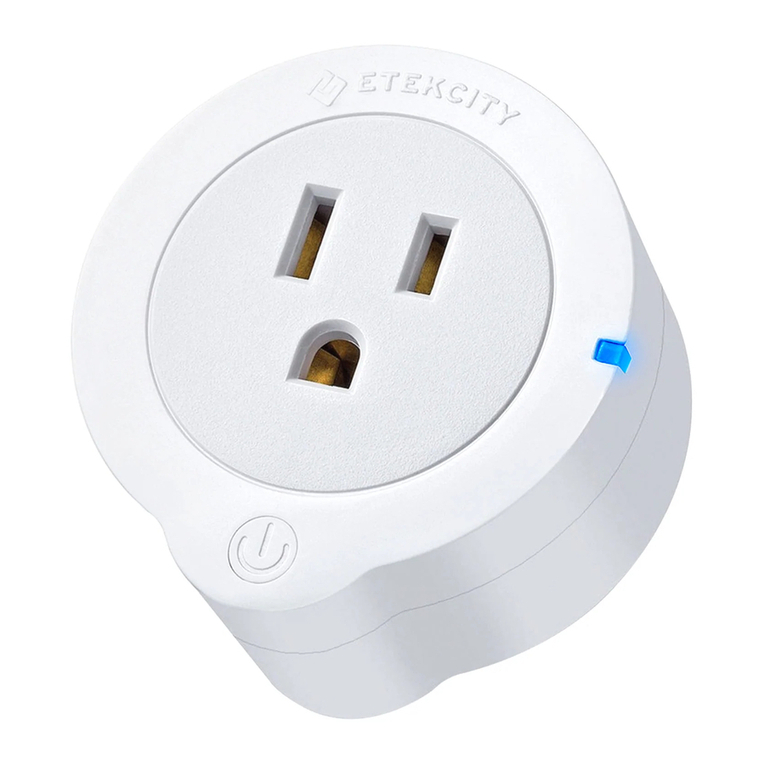
ETEKCITY
ETEKCITY ESW01-USA quick start guide

TRENDnet
TRENDnet TK-V200S Specifications

Vega
Vega VEGAPULS 63 operating instructions
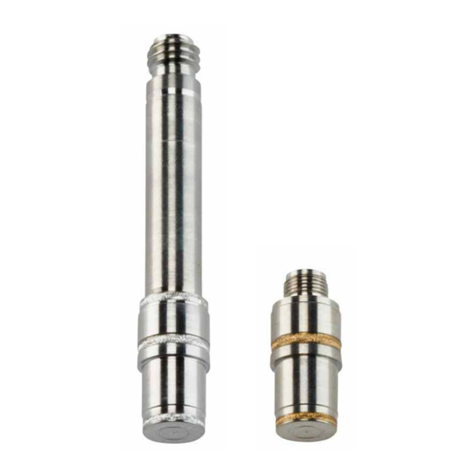
Kistler
Kistler 601C Series instruction manual

Hella
Hella PM03 Installation instructions and instructions for use

Bühler technologies
Bühler technologies TF-M-PT100-VAL-M3/55 Operation instructions
